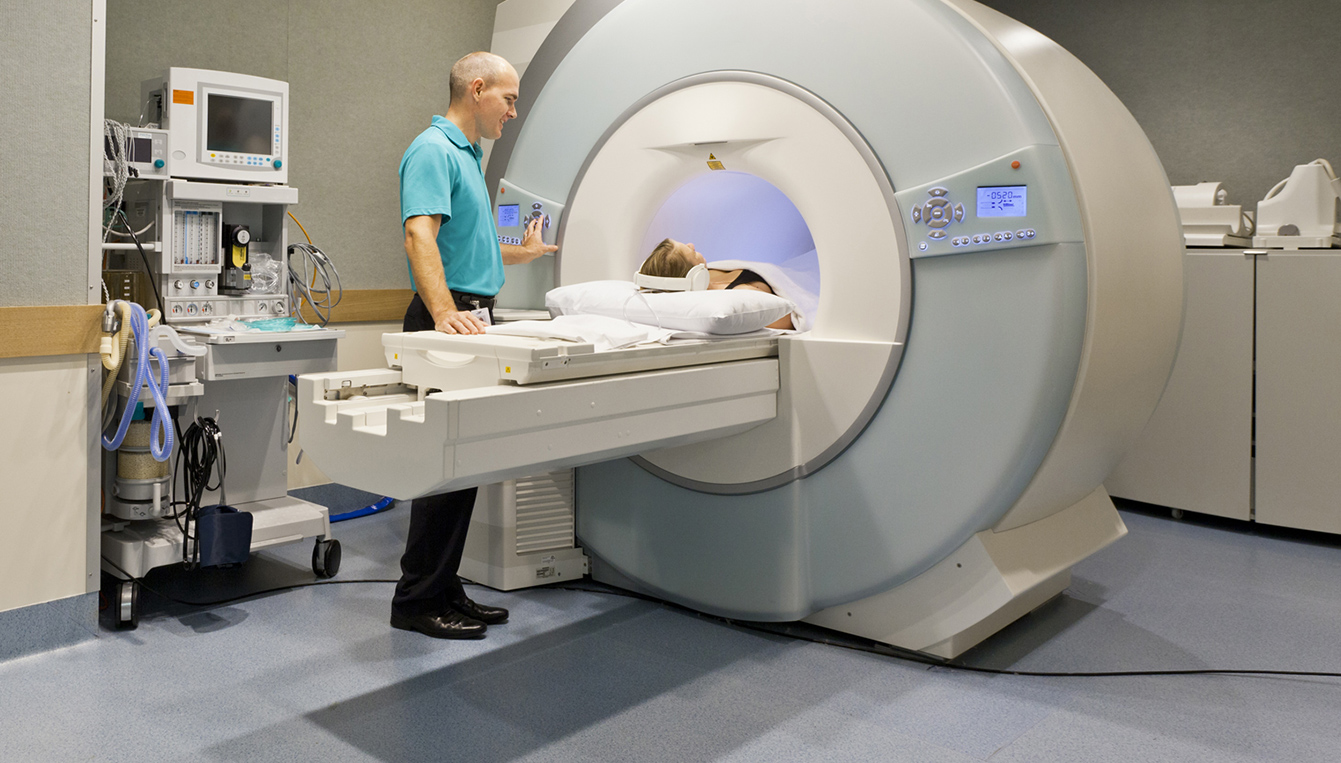 News
News
Internal Research & Development
Acentech is excited to announce the launch of our Internal Research & Development Grant Program. Its goal is to encourage our consulting staff to explore topics…

Magnetic resonance imaging (MRI) rooms are some of the loudest spaces in healthcare facilities. Sound levels near the room boundary can reach 100 to 105 dBA, similar to the sound level near an ambulance siren.
Reducing the noise transmission to nearby spaces requires attention to airborne and structure-borne transmission paths.
Airborne noise transmission occurs when noise radiated by the MRI travels through the air and strikes the walls, floor, and ceiling. The amount of noise transmission depends on the mass of the surfaces, number of layers making up the construction, and the separation between these layers.
Walls separating MRI rooms from adjacent spaces will typically have a “parent wall” on the adjacent room side and a “shielding wall” on the MRI room side. The best sound isolation to horizontally adjacent spaces can be achieved with a double-stud parent wall. Additional isolation, which benefits space horizontally adjacent and above the MRI room, can be achieved by using two layers of gypsum board on the room side of the shielding wall and using two layers of gypsum board on the top of the shielding ceiling framing.
If there are spaces below the MRI room, gypsum board ceilings can be suspended below the MRI floor structure to reduce noise transmission.
Structure-borne noise occurs when the vibration at the feet of the MRI is transmitted into the floor slab and radiated as sound in horizontally and vertically adjacent spaces. For MRIs on slab-on-grade, elastomeric vibration isolation pads between the magnet and the floor are usually sufficient to attenuate the noise.
However, MRIs on framed slabs with spaces below require additional attenuation. The most effective technique at these locations is to use a two-stage vibration isolation system where an intermediate mass, such as a stainless steel plate, is used between two layers of elastomeric pads and the MRI feet rest above the top layer of elastomeric pads.
Several major MRI manufacturers are introducing technology to reduce the noise of MRI scans, as well. These quieter MRIs will require fewer noise transmission solutions, making MRI rooms easier to site and construct in terms of noise control.